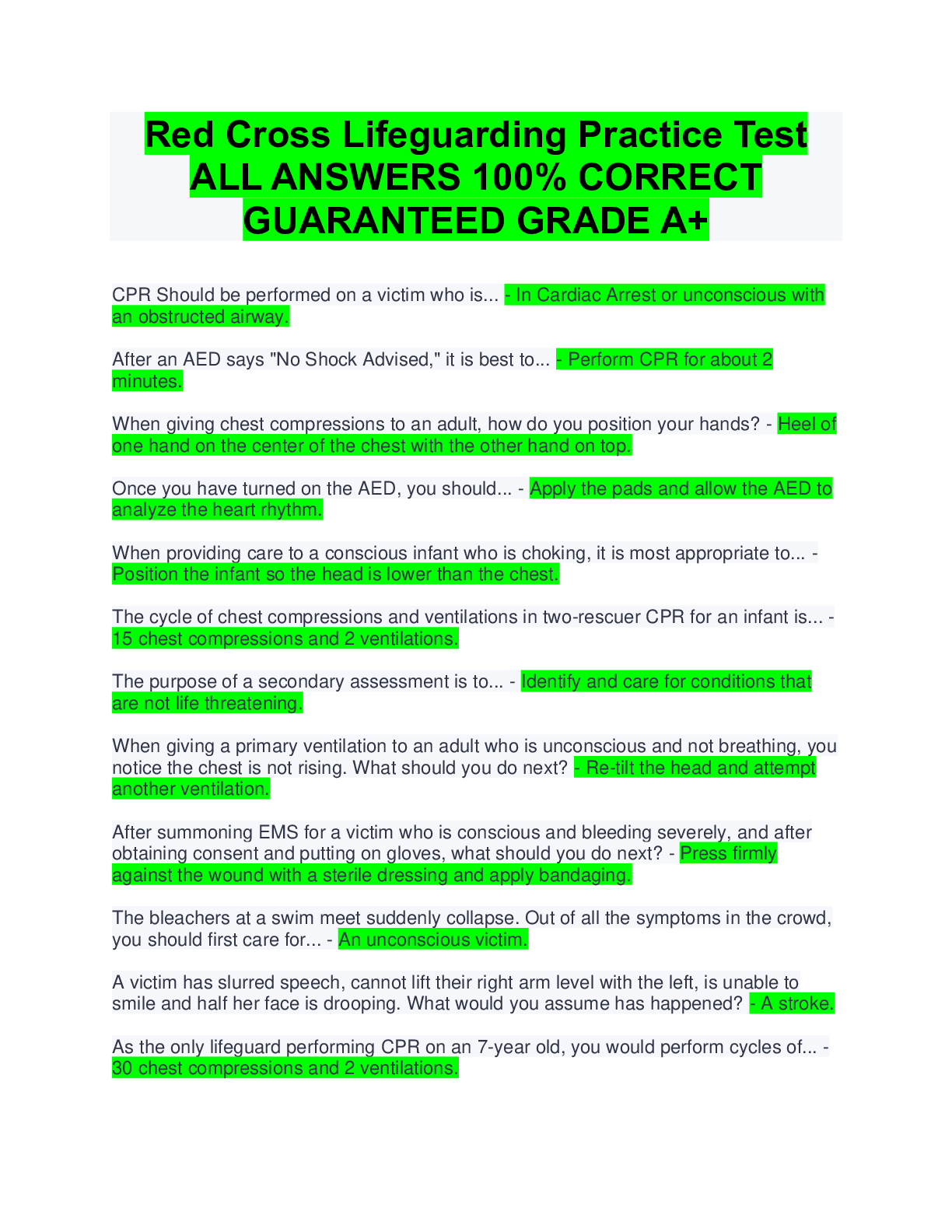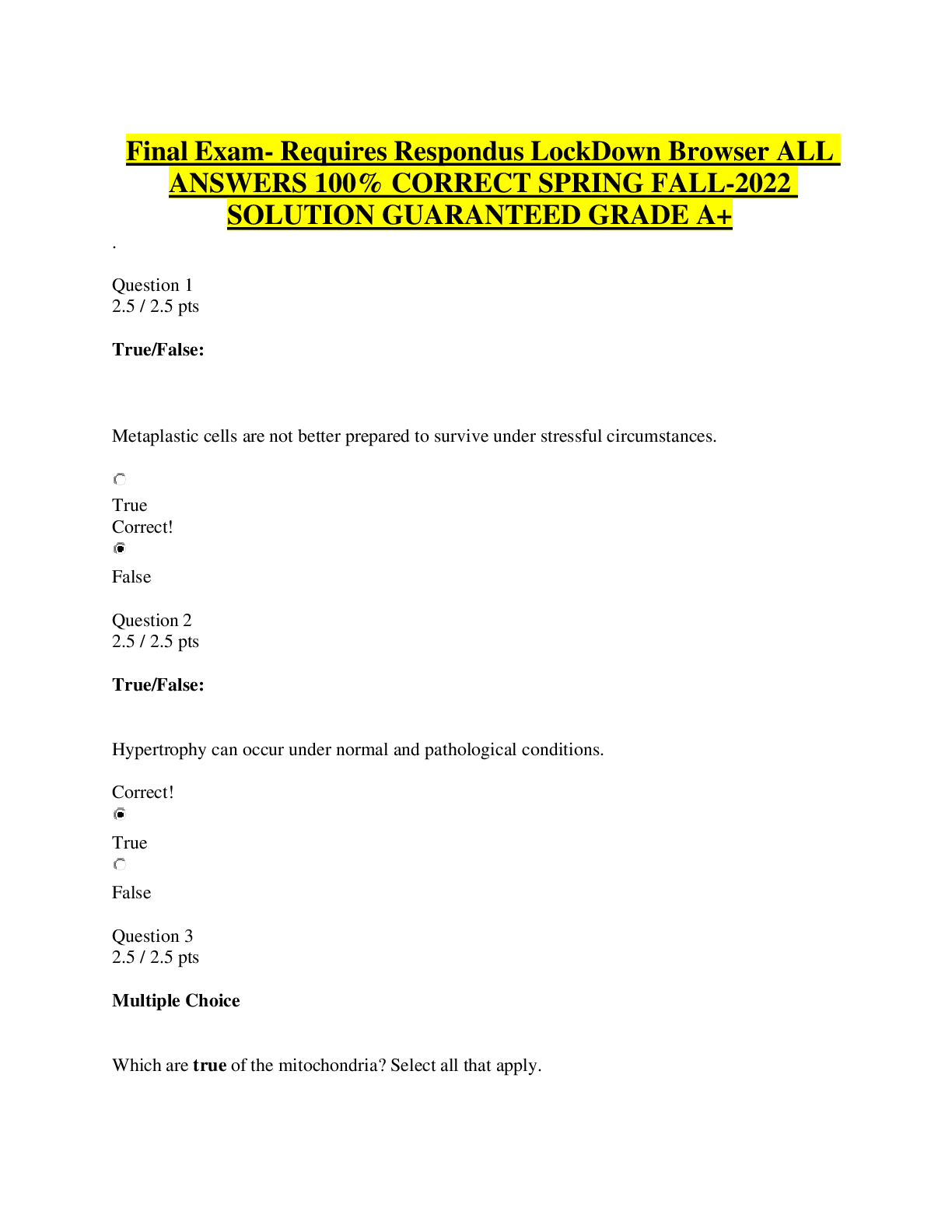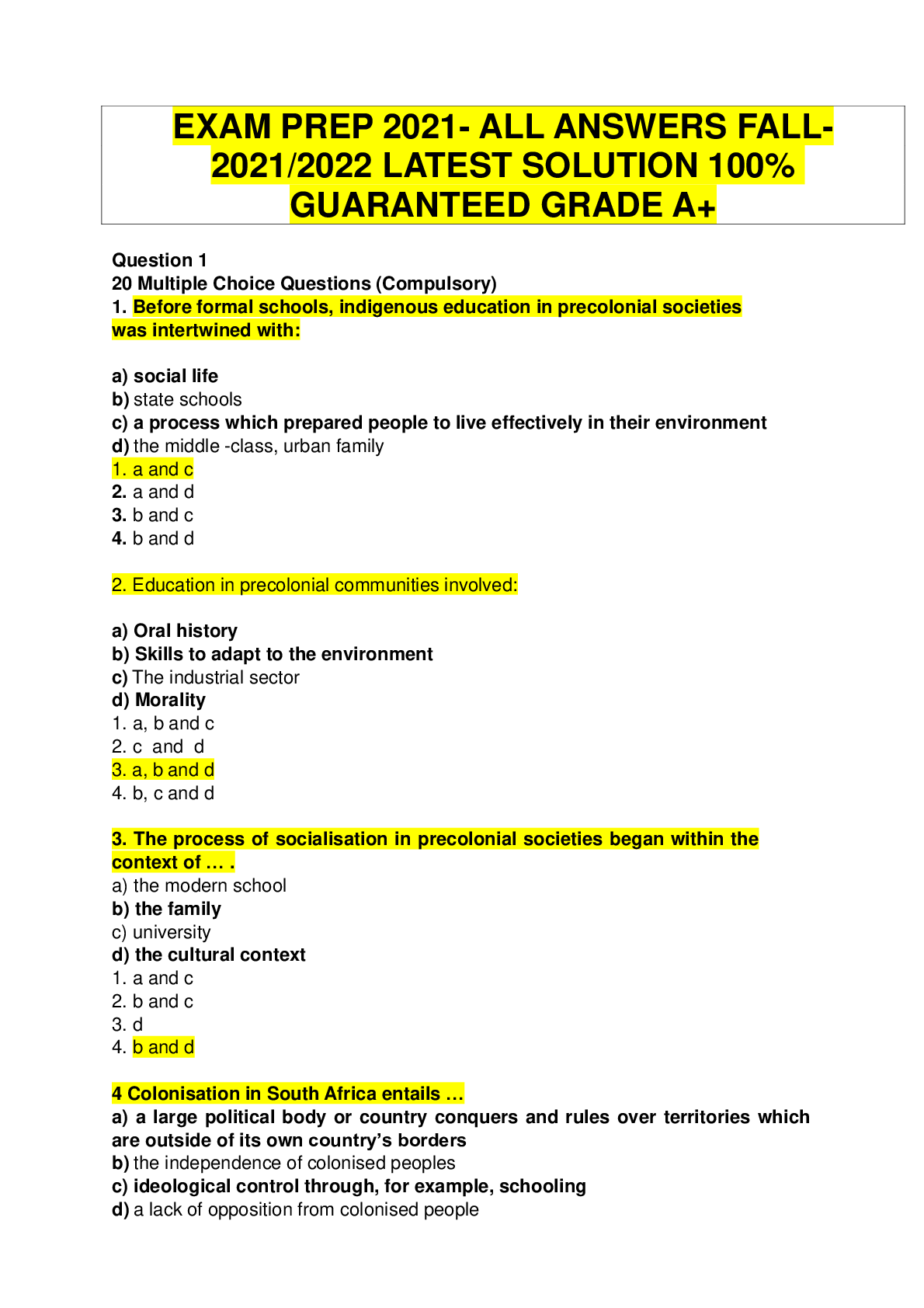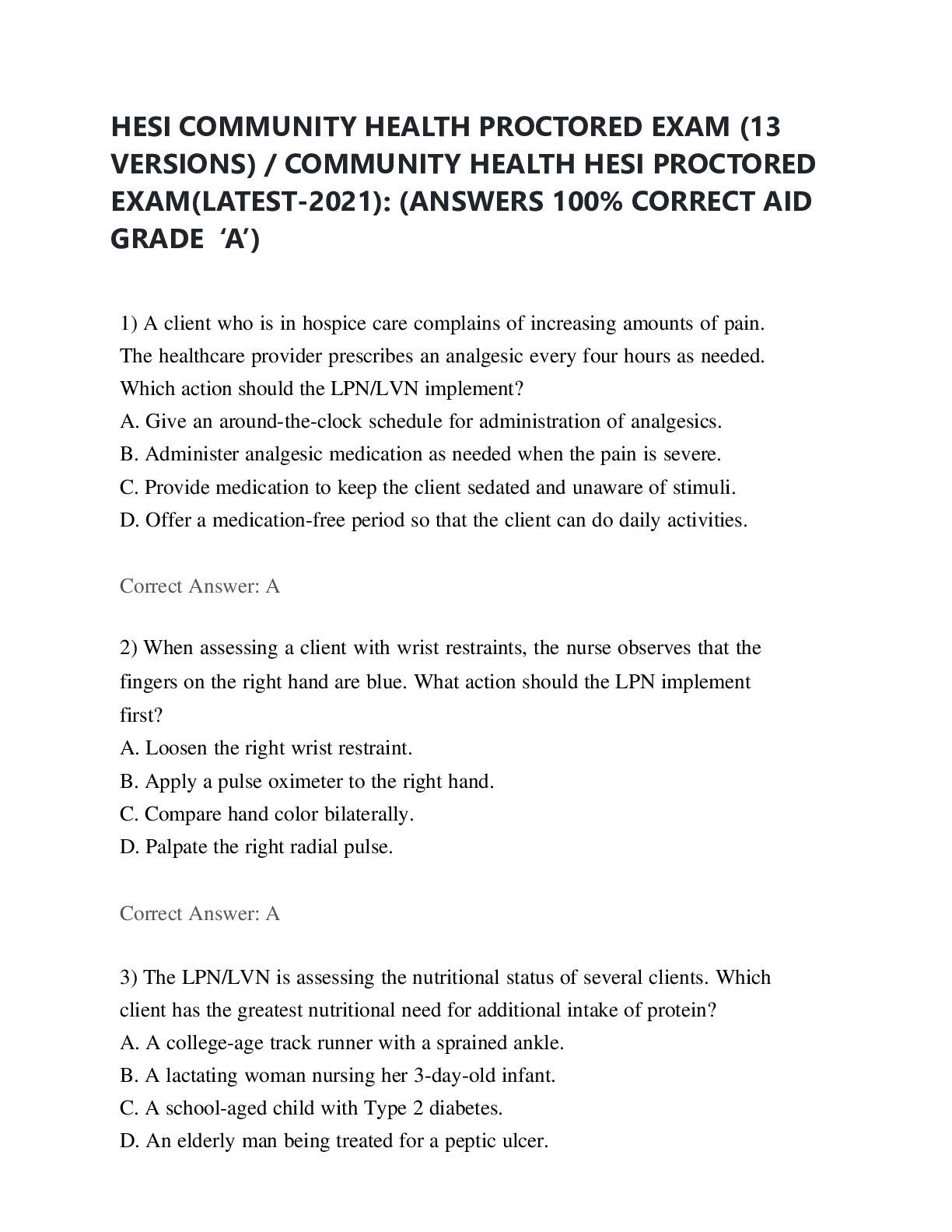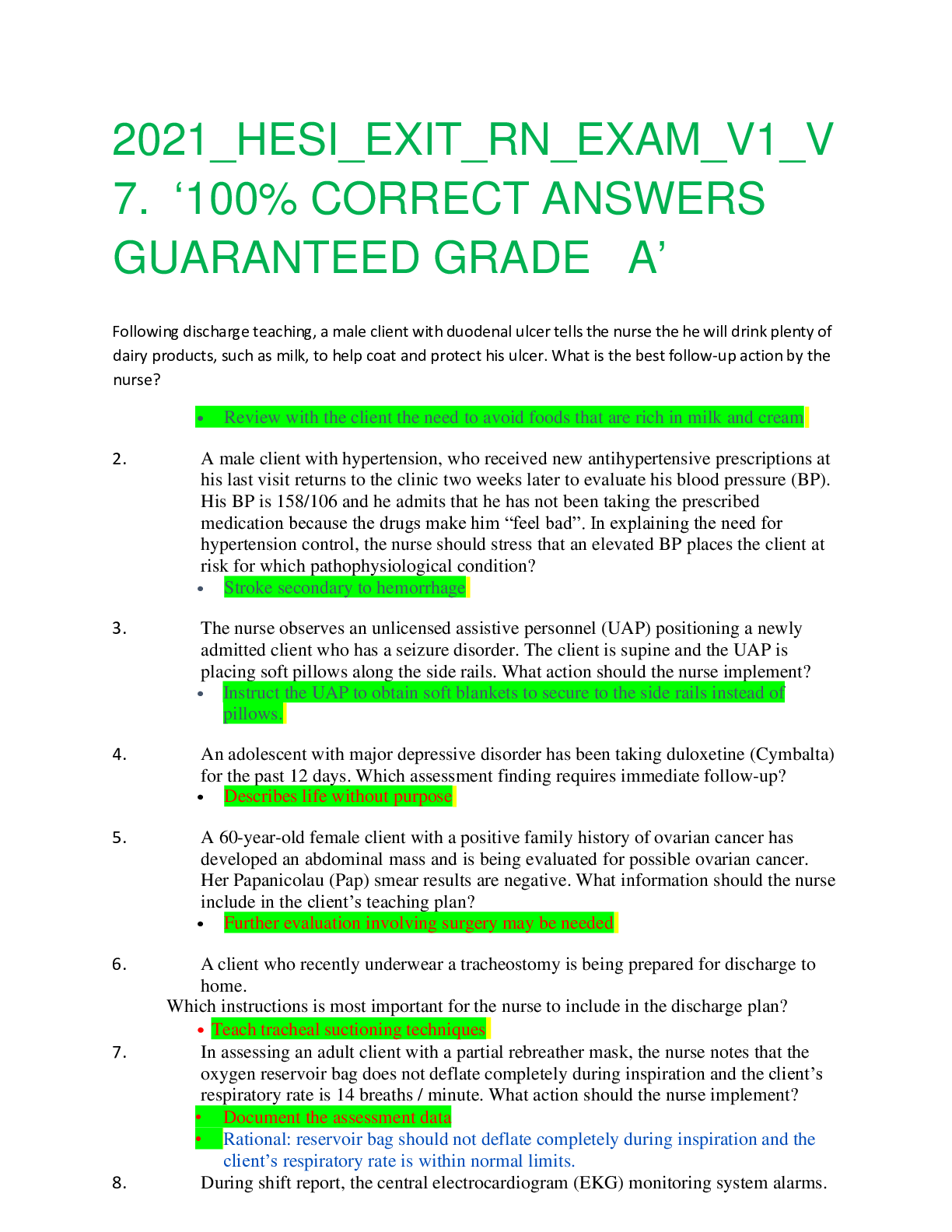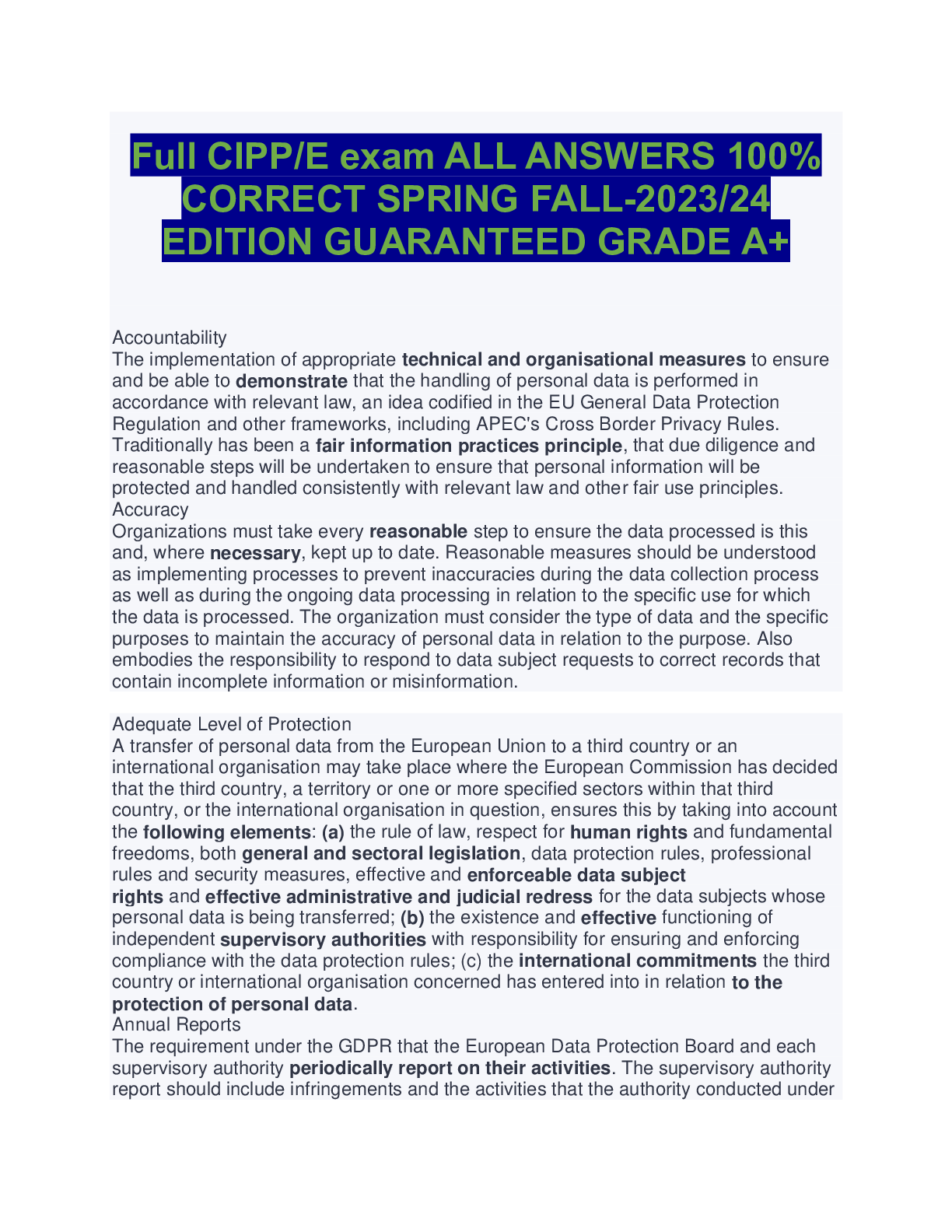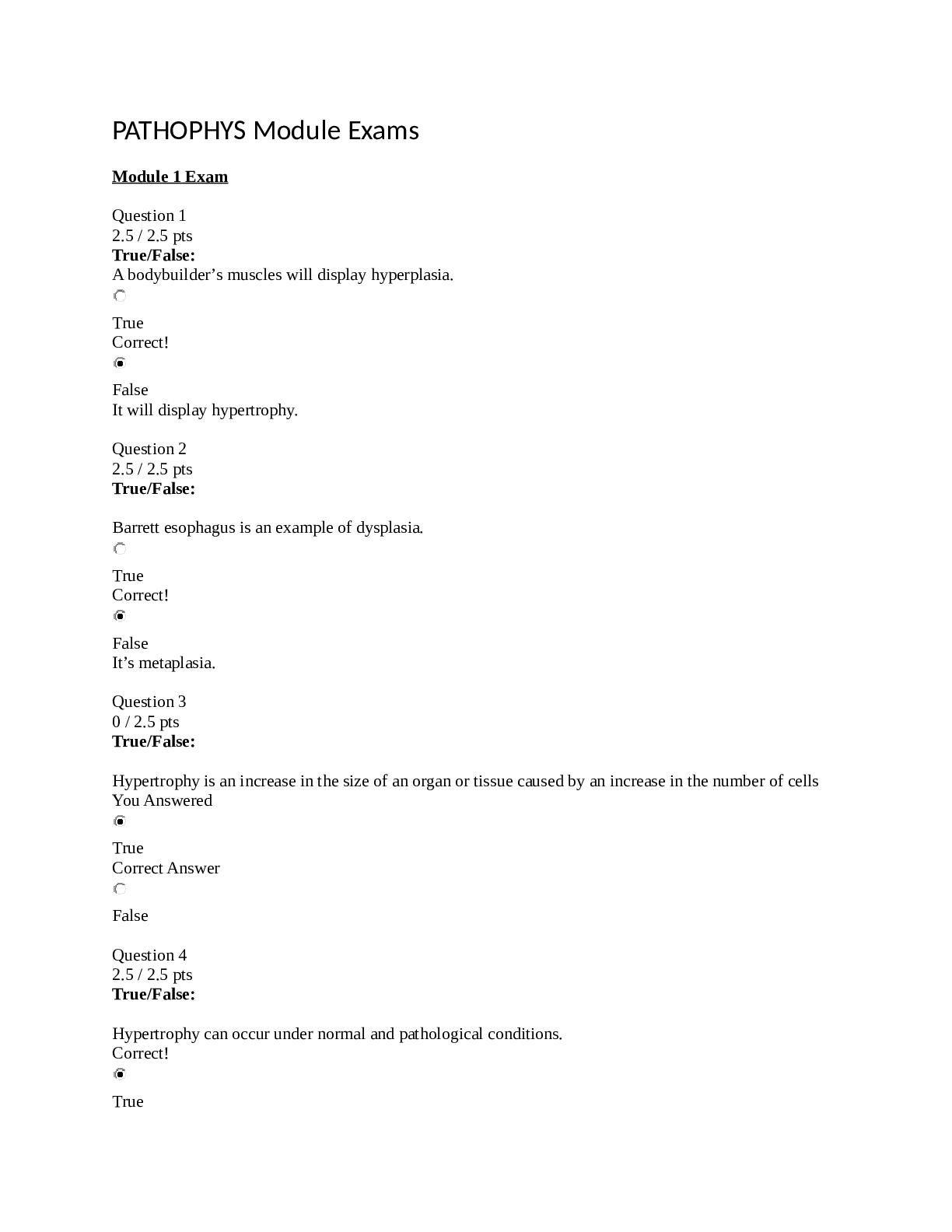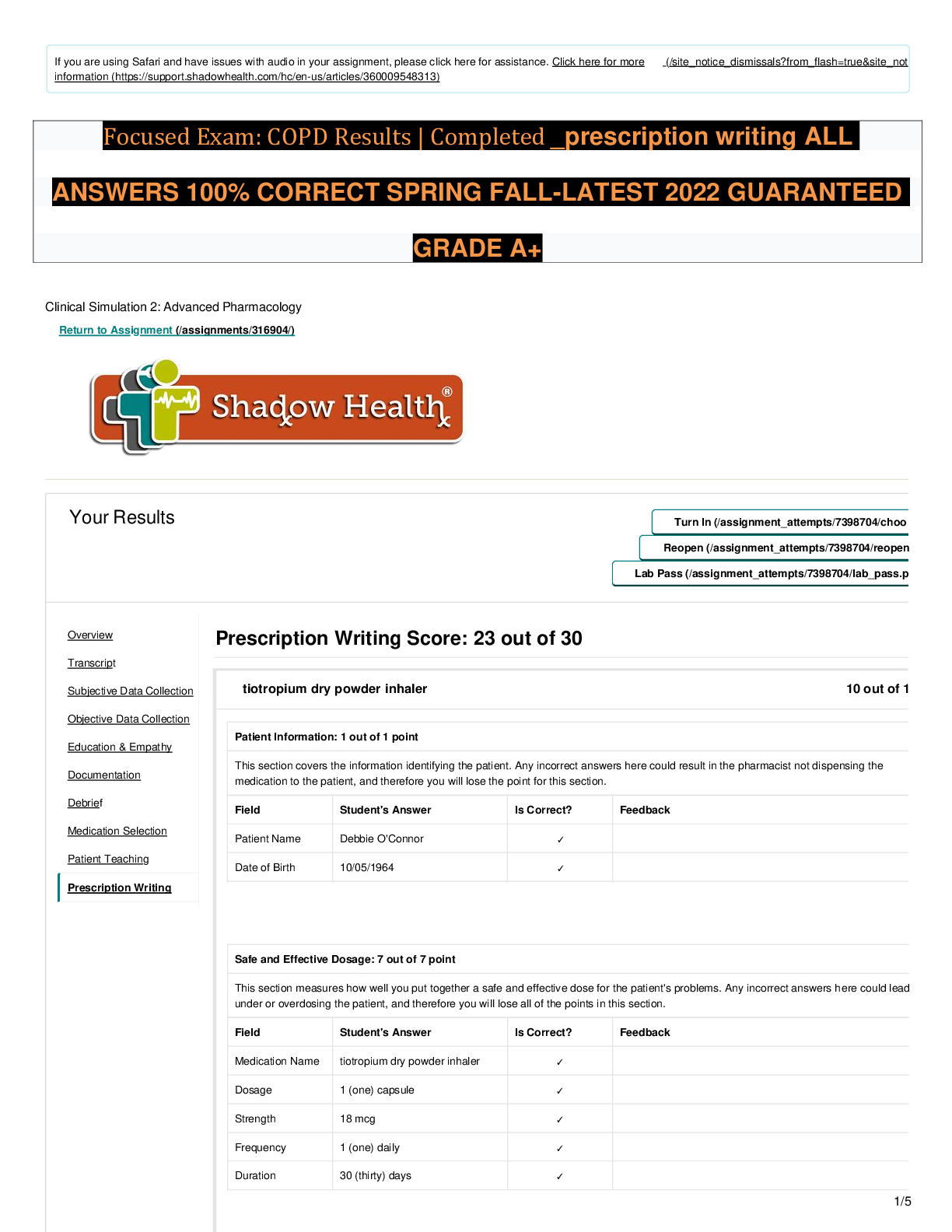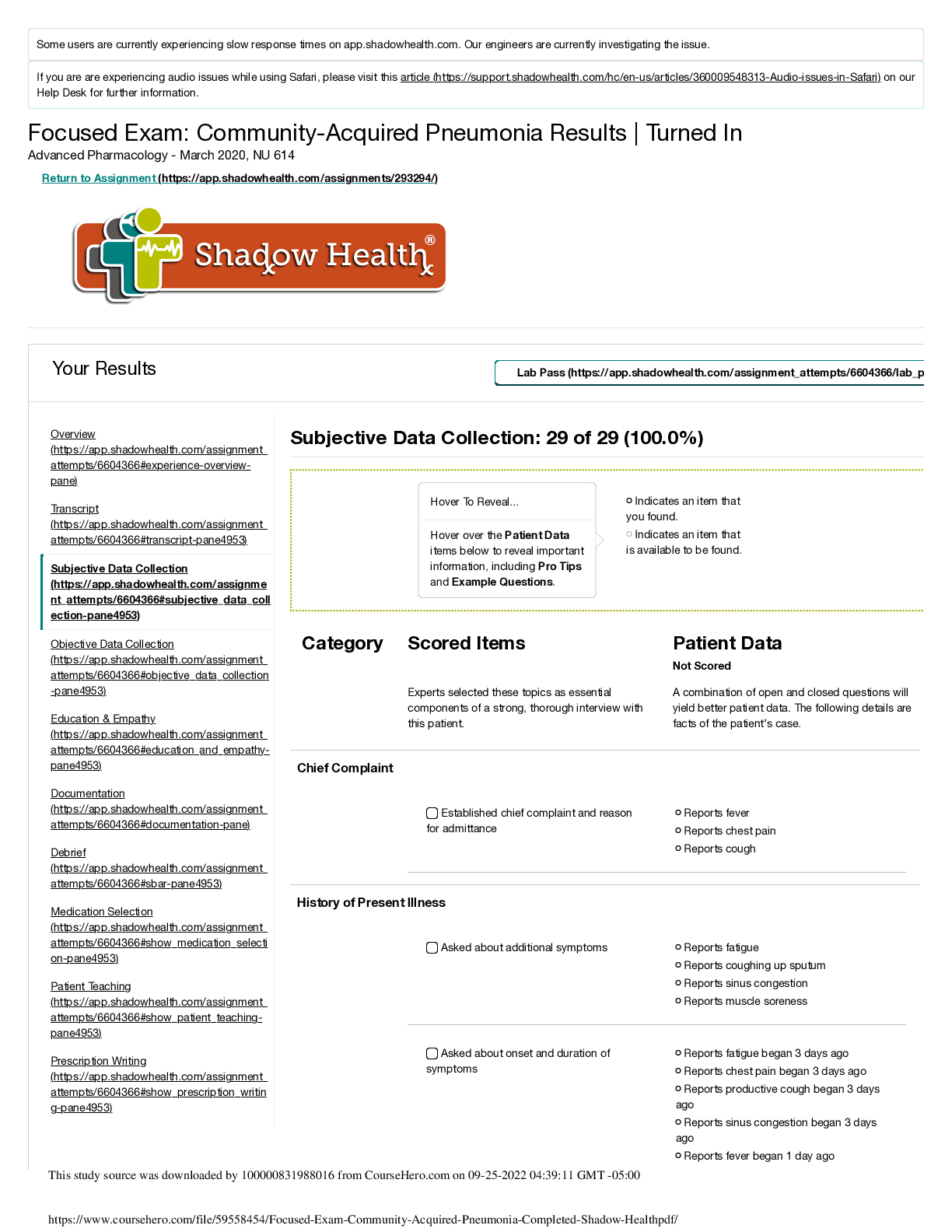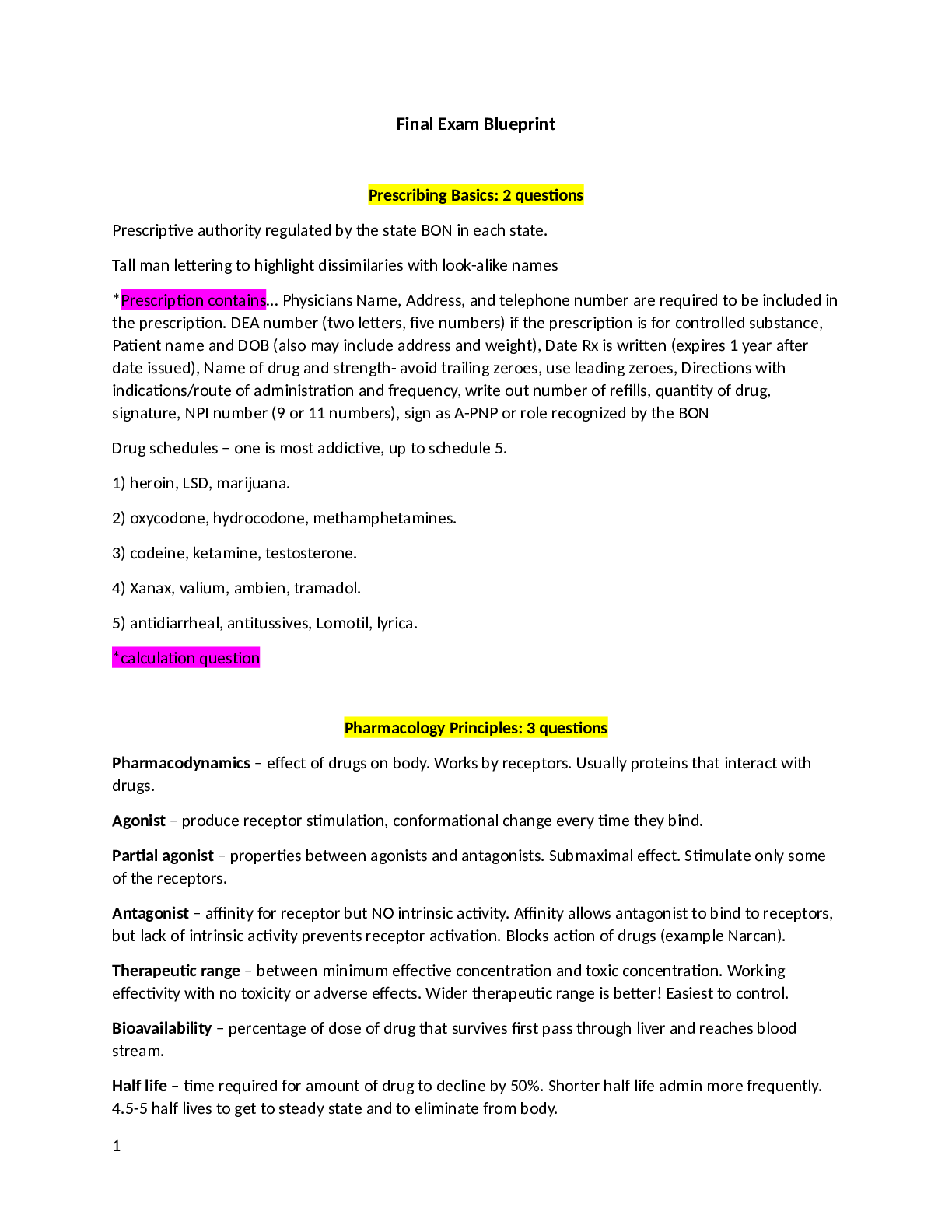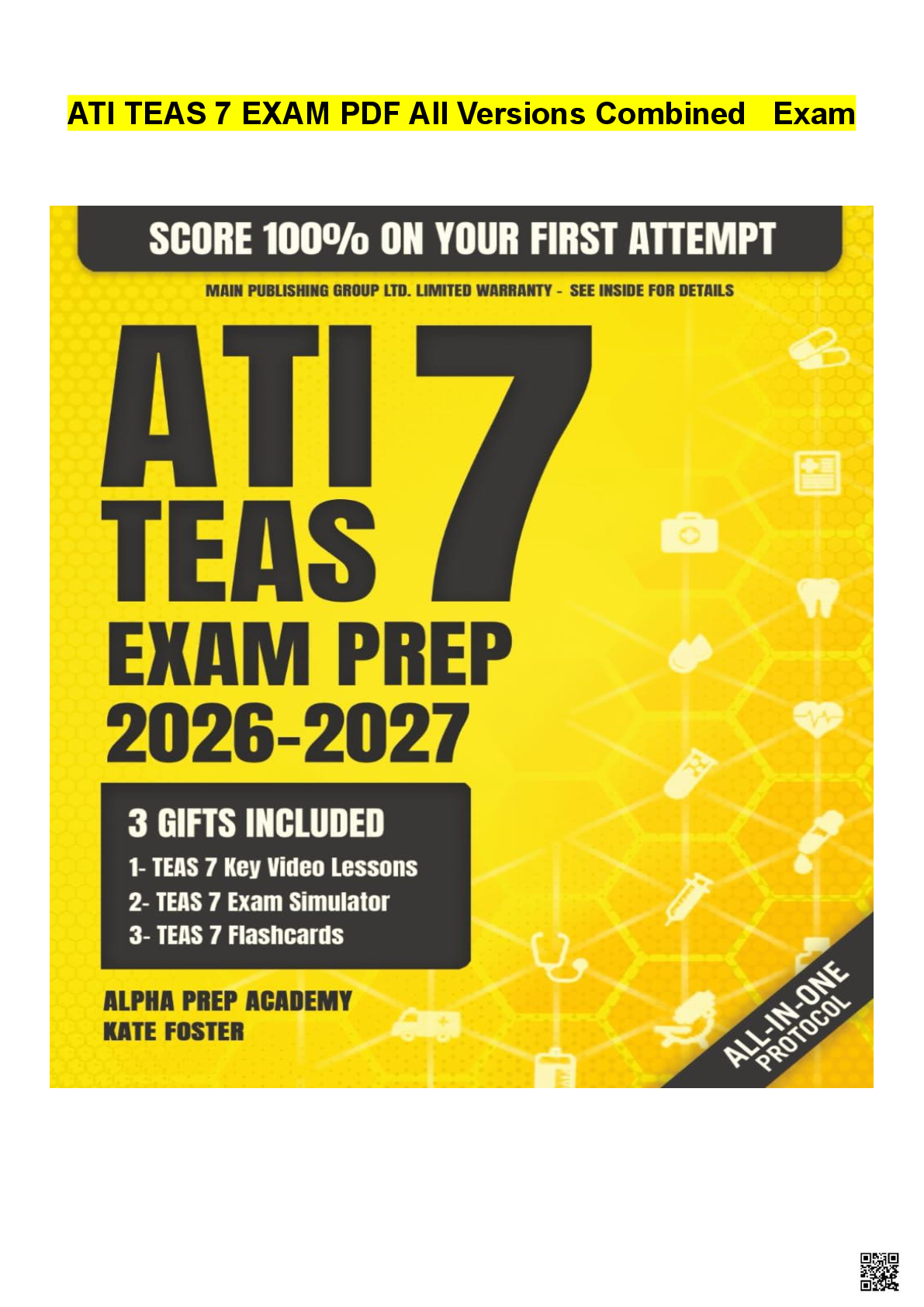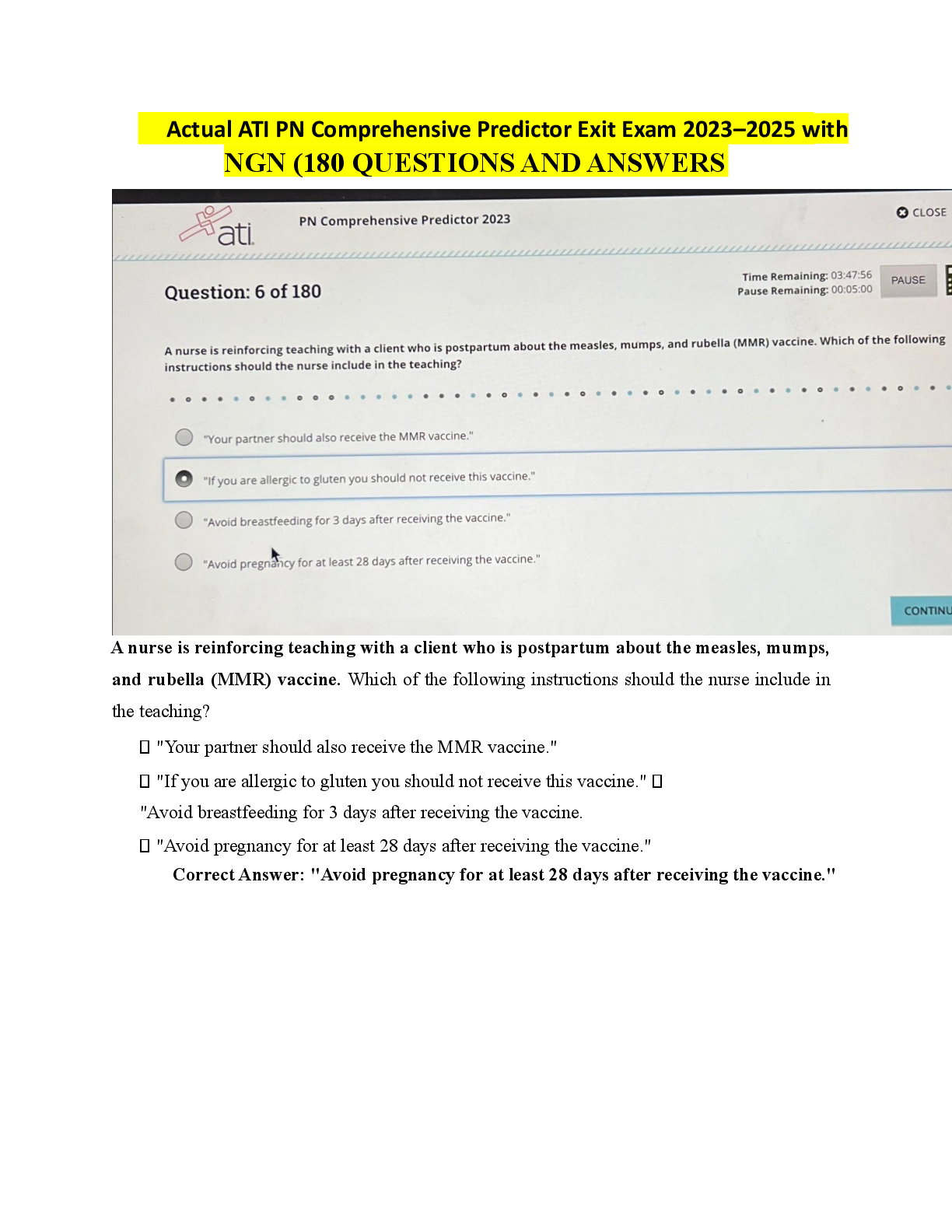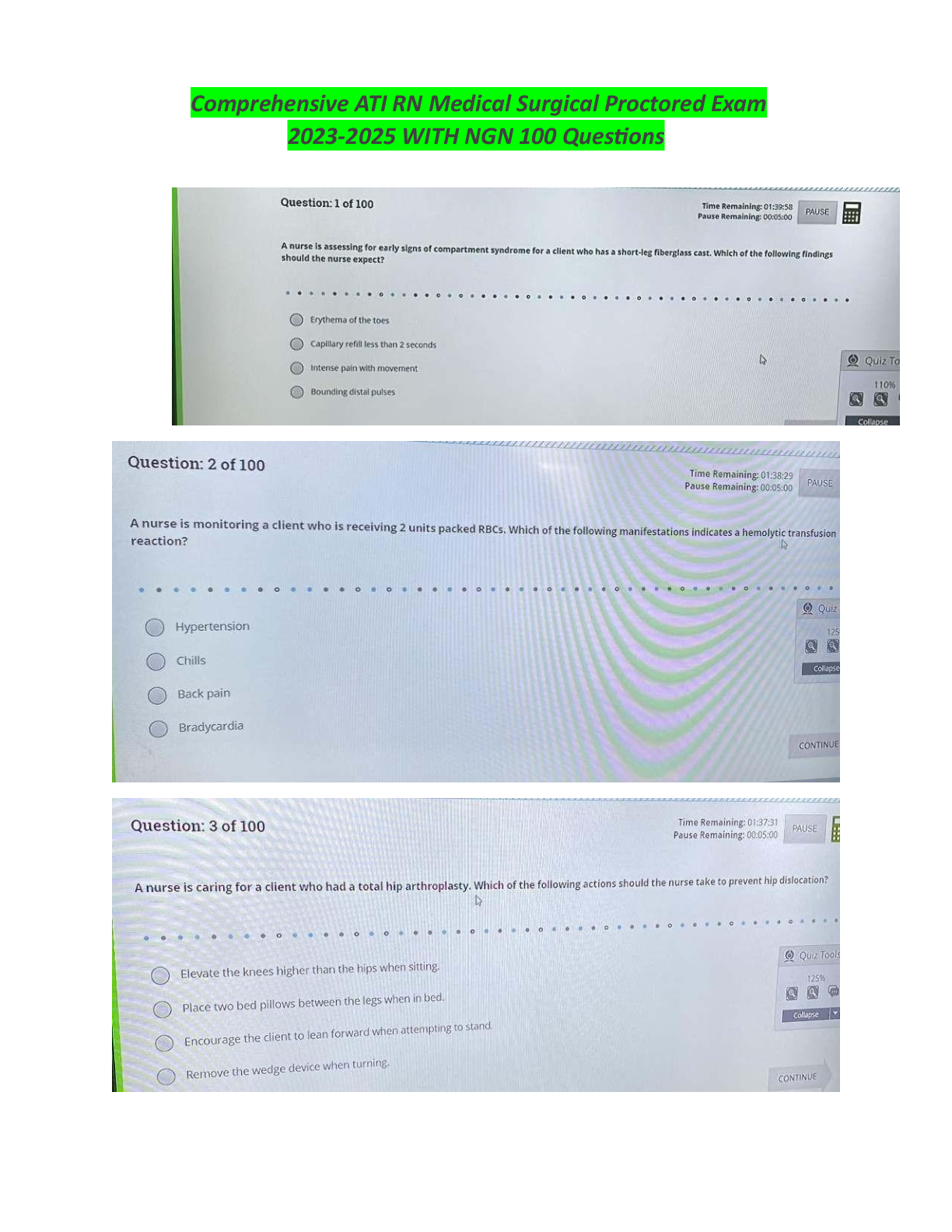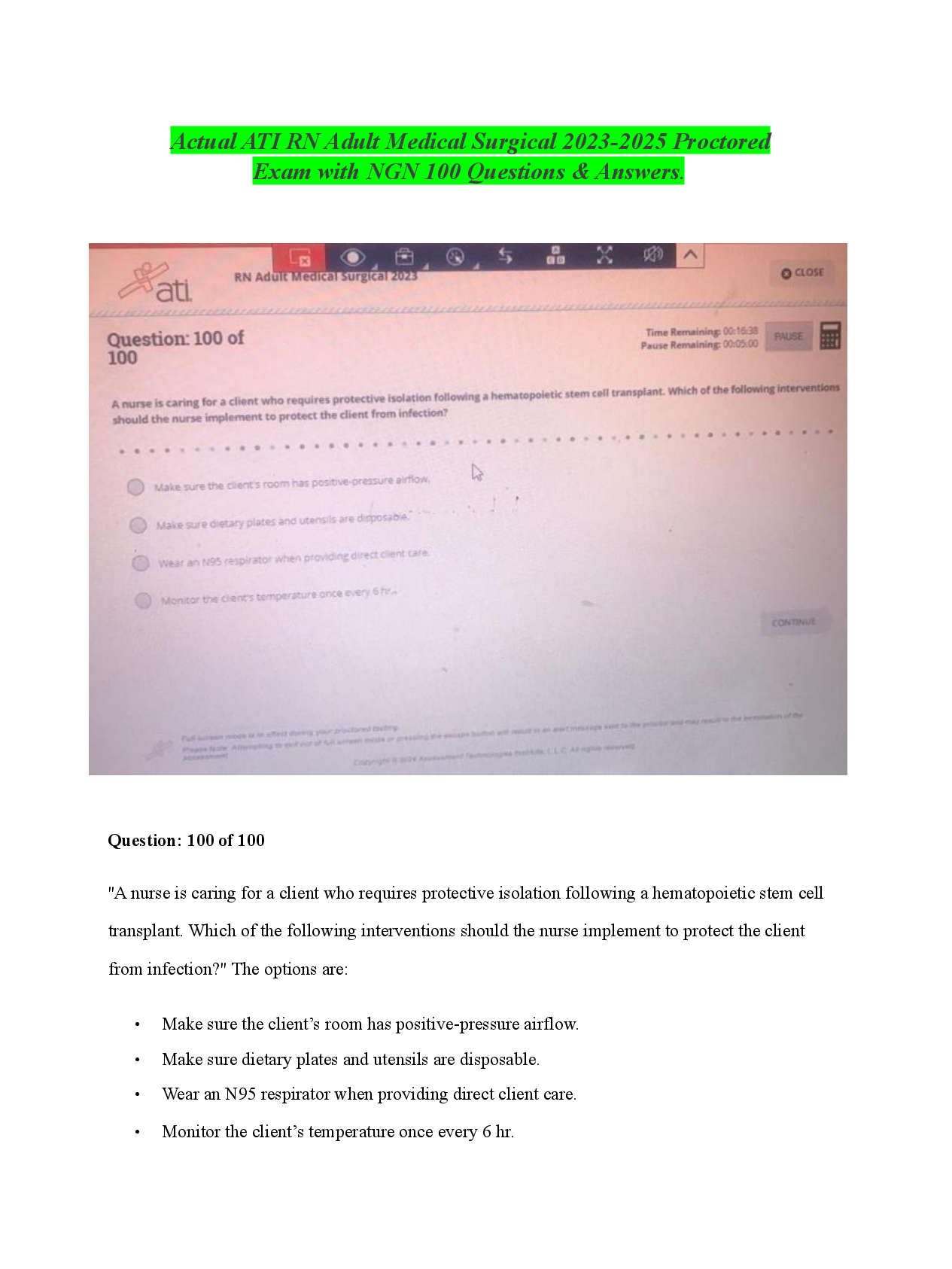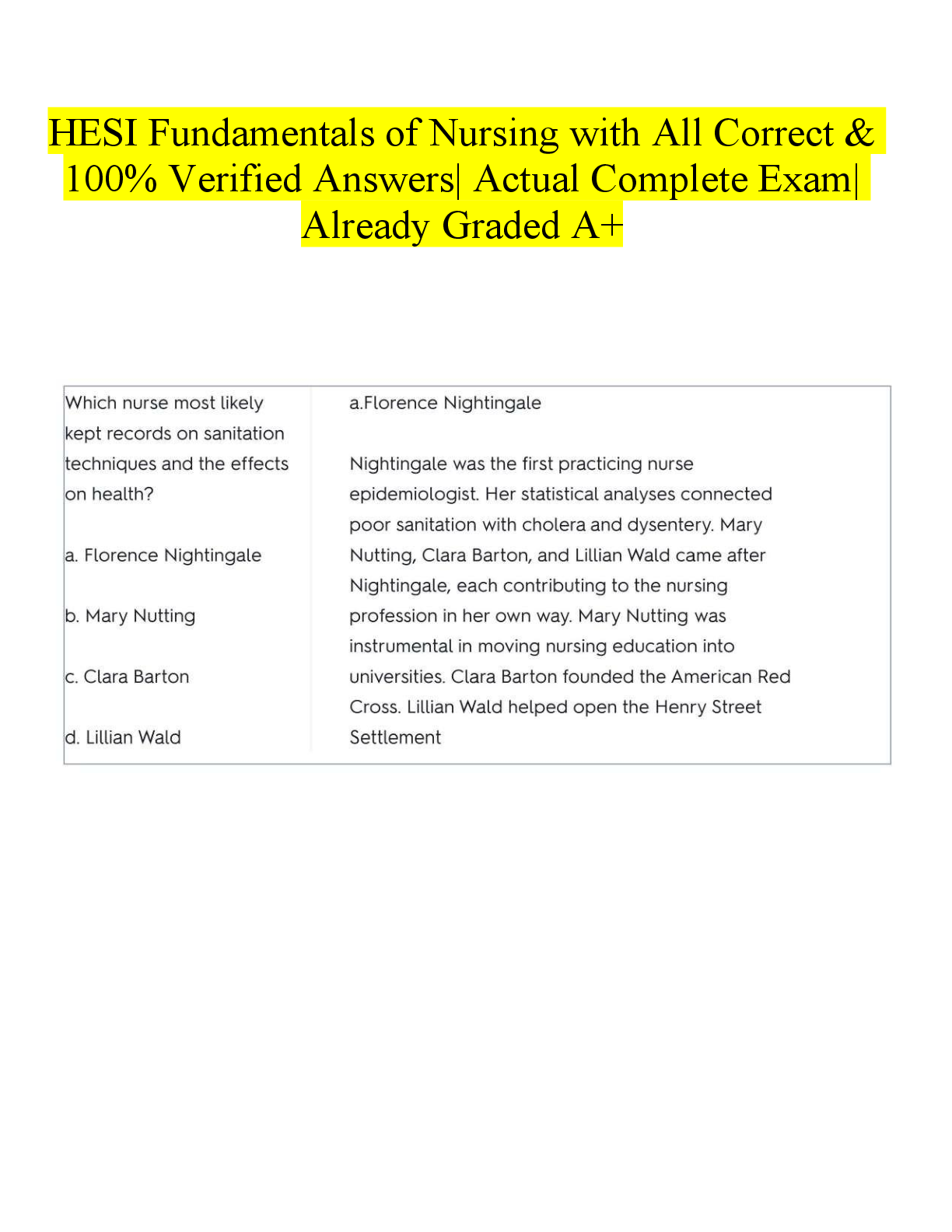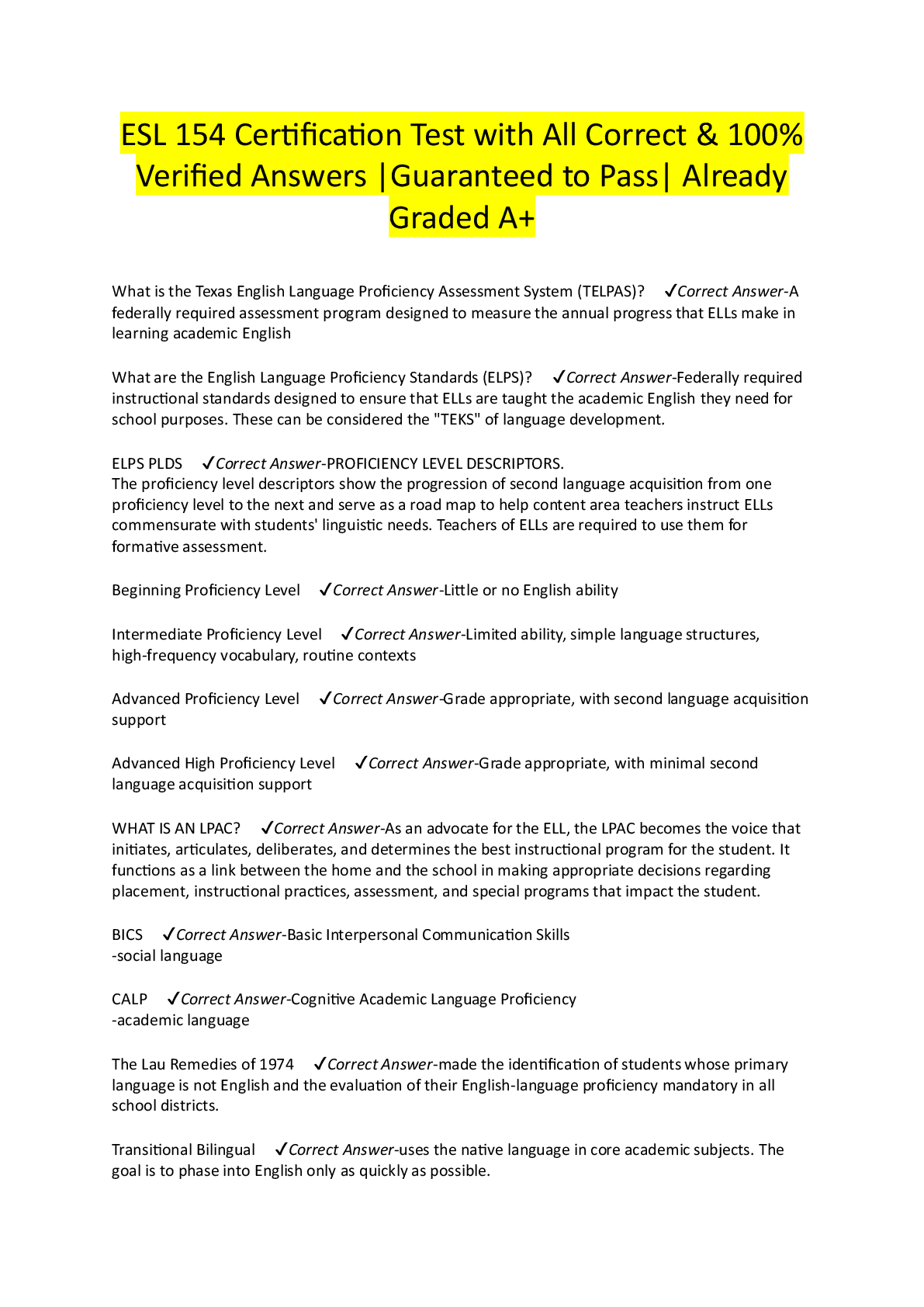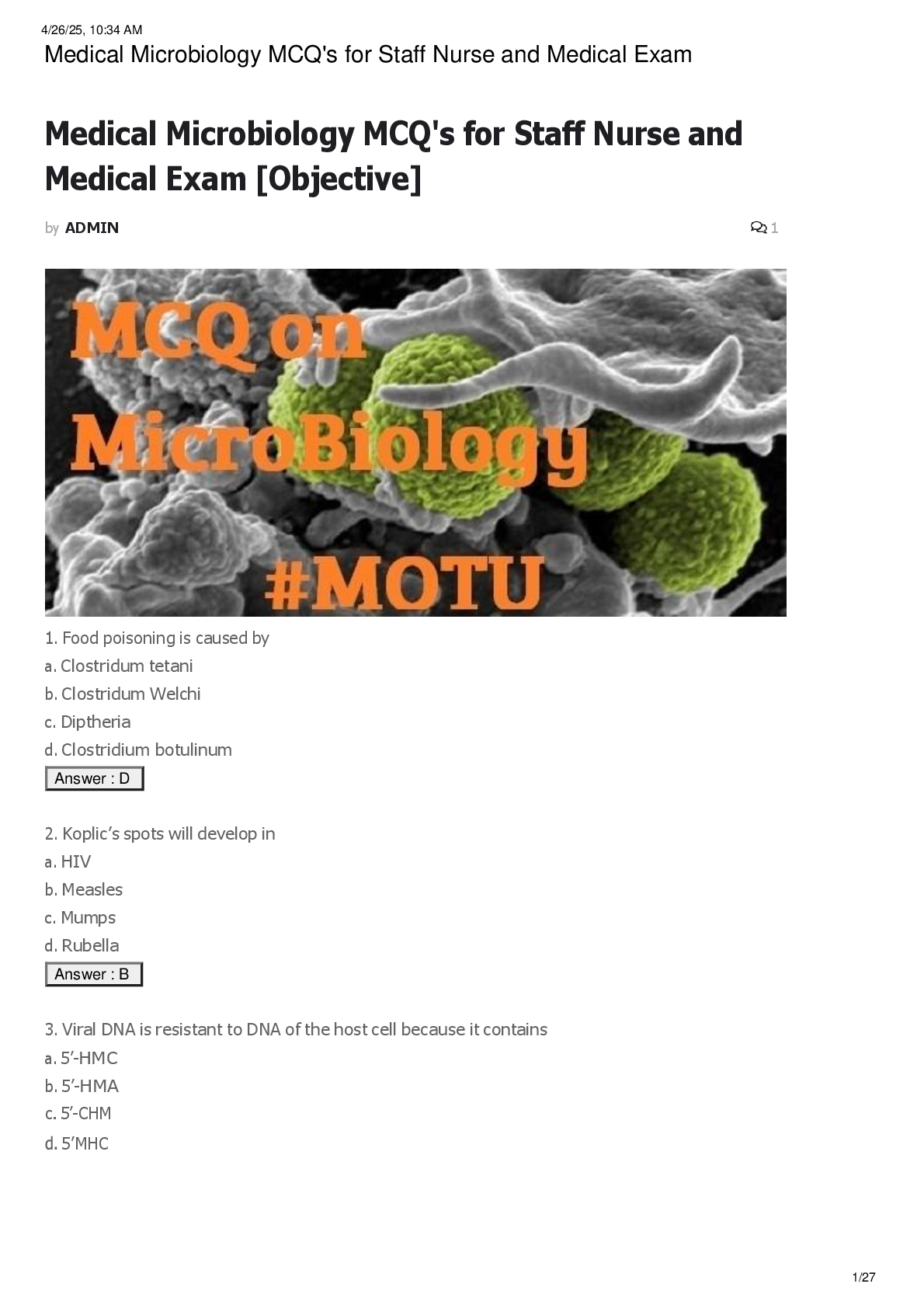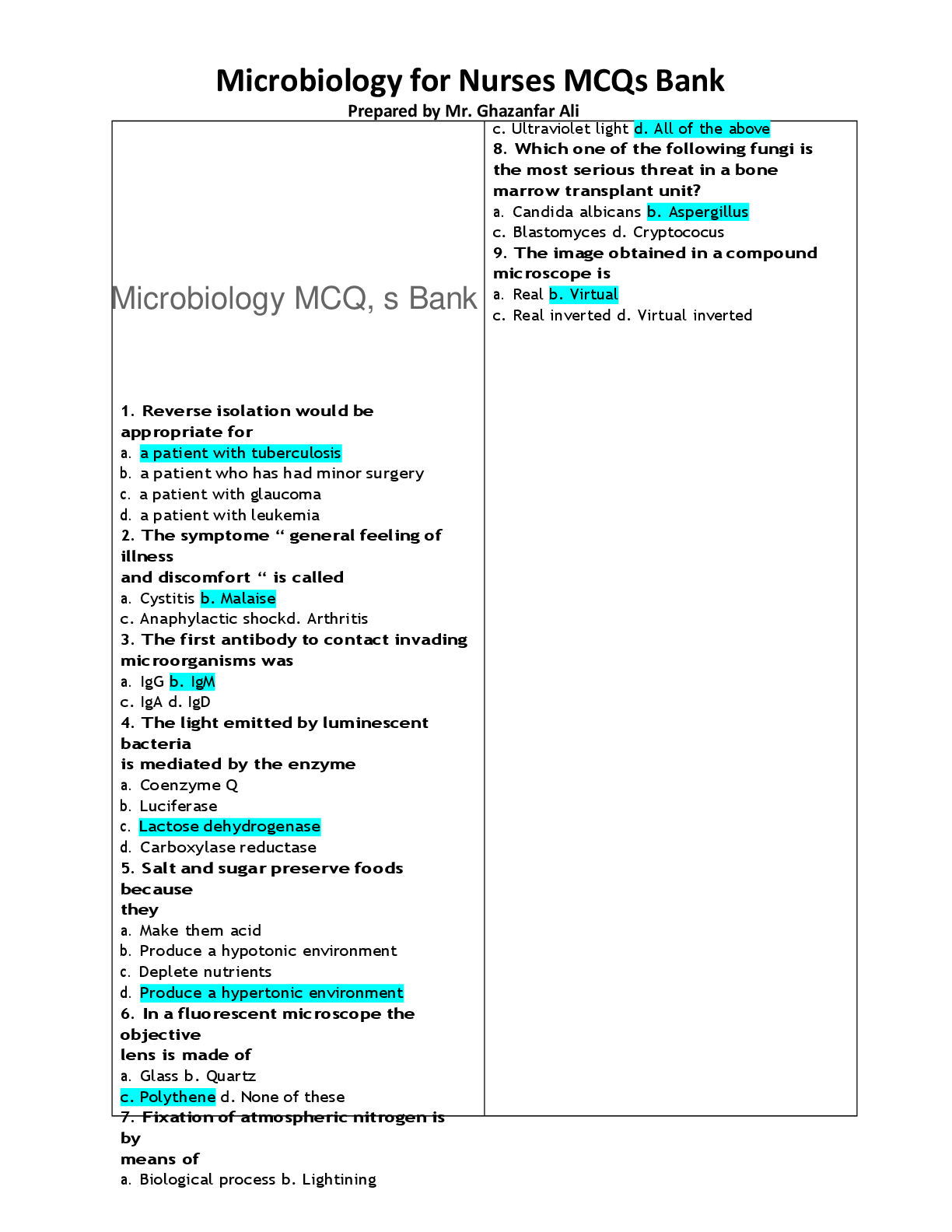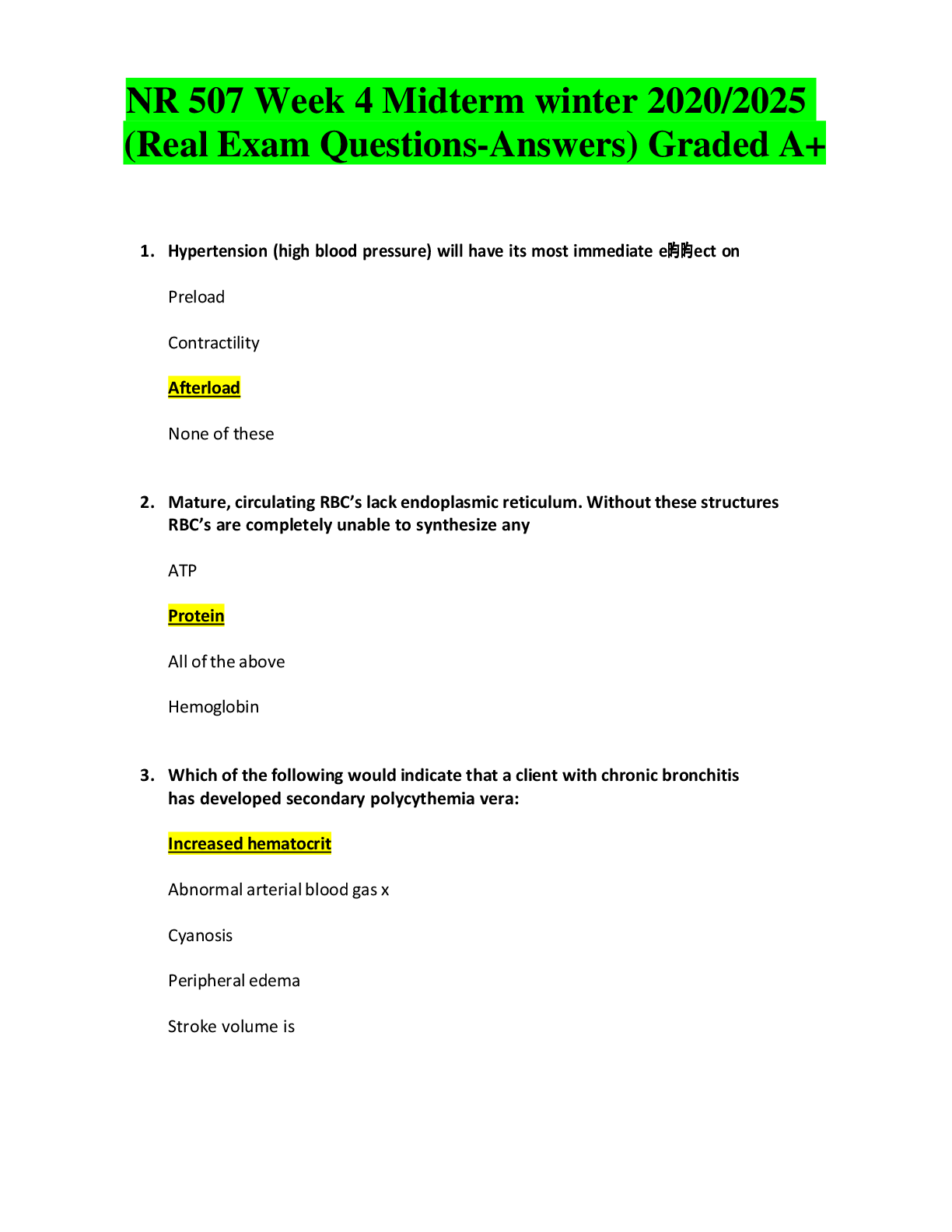*NURSING > EXAM > Study Questions and Answers Exam 2 ALL ANSWERS 100% CORRECT SPRING FALL-2022/2023 LATEST SOLUTION GU (All)
Study Questions and Answers Exam 2 ALL ANSWERS 100% CORRECT SPRING FALL-2022/2023 LATEST SOLUTION GUARANTEED GRADE A+
Document Content and Description Below
• What are the basic mechanisms by which neuropharmocologic agents act? o Can modify the disease process o Act at the sites of actions which is the axons versus synapses and steps in synaptic tran ... smission and effects of drugs on the steps of synaptic transmission • Transmittter synthesis is the first step in transmission. What are the other 4 steps? o Transmitter storage, transmitter release, receptor binding, and termination of the transmission • True or False: Neuropharmacologic drugs have high selectivity. o True—the nervous system uses many different receptor types • Information needed: o Type of receptors—through which the drug acts ▪ Alpha and beta o Normal responses to the activation of those receptors ▪ Agonists vs. antagonists o What the drug in questions does to the receptor function • What are the 3 functions of ANS? o Regulates the heart o Regulates the secretory glands, saliva glands, gastric, sweat, and bronchial o It regulates smooth muscles: bronchi, blood vessels, urogenital system, and the GI tract • What are the regulatory functions of the parasympathetic NS? o Seven regulatory functions ▪ Slowing the heart rate ▪ Increasing the gastric secretions ▪ Emptying the bladder ▪ Emptying the bowel ▪ Focusing the eye for near vision, ▪ Constricting the pupil ▪ Contracting the bronchial smooth muscle o It also regulates the digestion of food, excretion of waste, control of vision and conservation of energy • What are the functions of the sympathetic NS? o Regulation of the cardiovascular system ▪ Maintaining blood flow to the brain ▪ Redistributing blood and compensating for the loss of blood o Regulation of body temperature ▪ Regulates blood flow to the skin ▪ Promotes the secretion of sweat ▪ Induces piloerection (erection of the hair) o Implementation of the fight or flight reaction ▪ Increase HR and BP ▪ Blood shuts away from the skin and visera ▪ Bronchi dilate ▪ Pupils dilate ▪ Use energy that had been stored • What is the baroreceptor reflex? o The receptors near the heart monitor BP changes and send the information to the brain o The brain then activates the Autonomic NS to restore blood pressure to normal o When BP falls, this reflex causes vasoconstriction and increases cardiac output. o When BP rises, it causes vasodilation and reduces cardiac output • Where is acetylcholine employed? o Most junctions at the peripheral nervous system • Where is epinephrine and norepinephrine released? o Norepinephrine—postganglionic neurons o Epinephrine—adrenal medulla • What are the cholinergic receptors mediated by? What are the subtypes? o Receptors that mediate responses to acetylcholine o Subtypes: ▪ Nicotinic ▪ Muscarinic • Whare are adrenergic receptors mediated by? What are the subtypes? o Mediate responses to epinephrine and norepinephrine o Subtypes: ▪ Alphas ▪ Betas ▪ Dopamine • What are the functions of each adrenergic subtype? o Alpha 1—vasoconstriction, ejaculation and contraction of the bladder neck, and prostate o Alpha 2—(located in presynaptic junction)—minimal clinical significance o Beta 1—control the heart ▪ Increase HR, increase force of contraction and velocity of conduction in the AV node; stimulate renin released in the kidney o Beta 2—bronchial dilation, relaxation of the uterine muscle, vasodilation, glycogenolysis o Dopamine—dilates renal blood vessels • Epinephrine can activate all alpha and beta receptors but not dopamine receptors • Norepinephrine can activate alpha1, alpha2, and beta receptors but not beta2 or dopamine receptors • Dopamine can activate alpha1, beta1 and dopamine receptors • Muscarinic agonists mimic the effects of acetylcholine at muscarinic receptors • Muscarinic antagonists selectively blood the effects of acetylcholine (and other muscarinic agonists) at muscarinic receptors • What are therapeutic uses of Bethanechol? o Urinary retention o Investigational GI uses—off label GI reflux • What are actions on smooth muscle, exocrine glands, and eye? o Smooth muscle— ▪ lung by causing constriction of the bronchi ▪ the GI system by increasing tone and motility ▪ the bladder by contraction of the detrusor muscle ▪ relaxation of the trigone and sphincter o Exocrine glands—increased sweating salivation, bronchial secretions and secretion of gastric acid o Eye—causes miosis and contraction of the ciliary muscle • Adverse Effects? o Hypotension o Abdominal cramps o Diarrhea o Increased salivation o Exacerbate asthma o Can cause dysrhythmias in patients with hyperthyroidism • What are cevimeline, pilocarpine, and acetylcholine used for? o Cevimeline—treat dry mouth and Sjogren’s syndrome o Pilocarpine—topical treatment of glaucoma as well as dry mouth from Sjogren’s syndrome o Acetylcholine—rapid myosis after delivery and cataract surgery • Anticholinergics o Competitively block the actions of acetylcholine as muscarinic receptors o Most muscarinic receptors are on structures innervated by parasympathetic nerves o Also known as parasympatholytic drugs, antimuscarinic drugs, muscarinic blockers, and anticholinergic drugs o Anticholinergic drugs: produce selective blockade of the muscarinic receptors (not all cholinergic receptors) o Can’t pee, see, spit or shit • What are the pharmacologic effects of atropine? o The heart—increases in rate o The exocrine glands—decrease secretions o Smooth muscle—relaxes the bronchi, decreases the tone of the urinary bladder detrusor and decreases the tone motility of the GI tract o Mydriasis and cycloplegia in the eyes o Mild excitation to hallucinations and delirium in the Central Nervous system • Therapeutic Uses of Atropine? o Pre-anesthetic medication to help dry up secretions o Disorders of the eye o In codes for bradycardia, intestinal hypertonicity and hypermotility o Muscarinic agonist poisoning o Peptic ulcer disease o Asthma o Biliary colic • Side effects of Atropine [Show More]
Last updated: 3 years ago
Preview 1 out of 34 pages

Buy this document to get the full access instantly
Instant Download Access after purchase
Buy NowInstant download
We Accept:

Reviews( 0 )
$11.50
Can't find what you want? Try our AI powered Search
Document information
Connected school, study & course
About the document
Uploaded On
Aug 19, 2022
Number of pages
34
Written in
All
Additional information
This document has been written for:
Uploaded
Aug 19, 2022
Downloads
0
Views
64

